10 Chilli Types Ordered By Their Spiciness (In Scoville Heat Units)
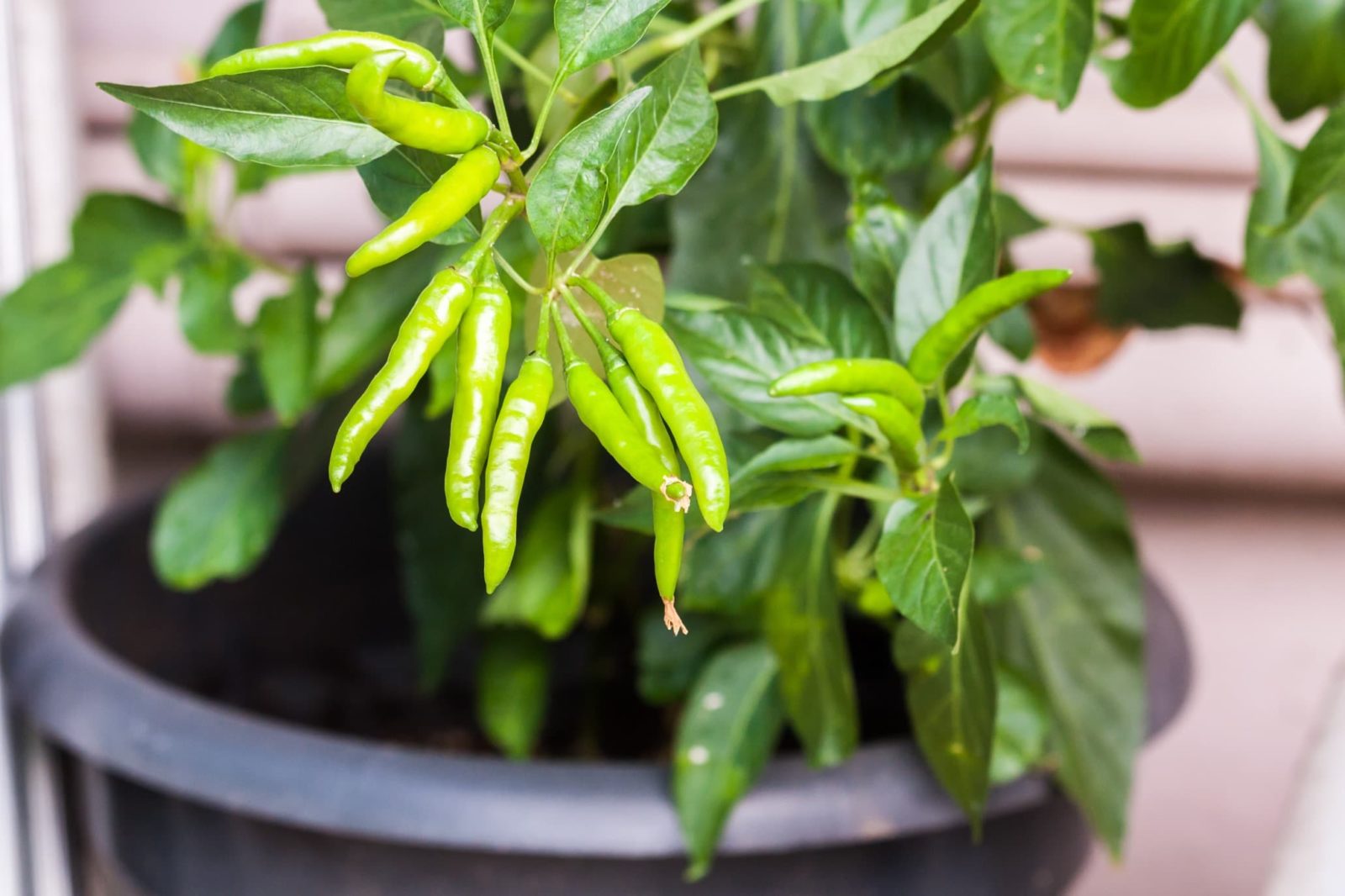
Reviewed By COLIN SKELLY

Colin is a Horticulturist and Horticultural Consultant with experience in a range of practical and managerial roles across heritage, commercial and public horticulture. He holds the Royal Horticultural Society’s Master of Horticulture award and has a particular interest in horticultural ecology and naturalistic planting for habitat and climate resilience.
IN THIS GUIDE
CHILLI GUIDES
All chillies are species of Genus Capsicum.1Capsicum species. (n.d.). Oxford University Plants. Retrieved March 14, 2023, from https://herbaria.plants.ox.ac.uk/bol/plants400/Profiles/cd/Capsicum
This genus – along with potatoes, tomatoes, and many other plants, some of them quite surprising – is a member of the Family Solanaceae, the Nightshade Family of plants.
The capsicum genus has five species: C. annuum, C. chinense, C. frutescens, C. pubescens, and C. baccatum.
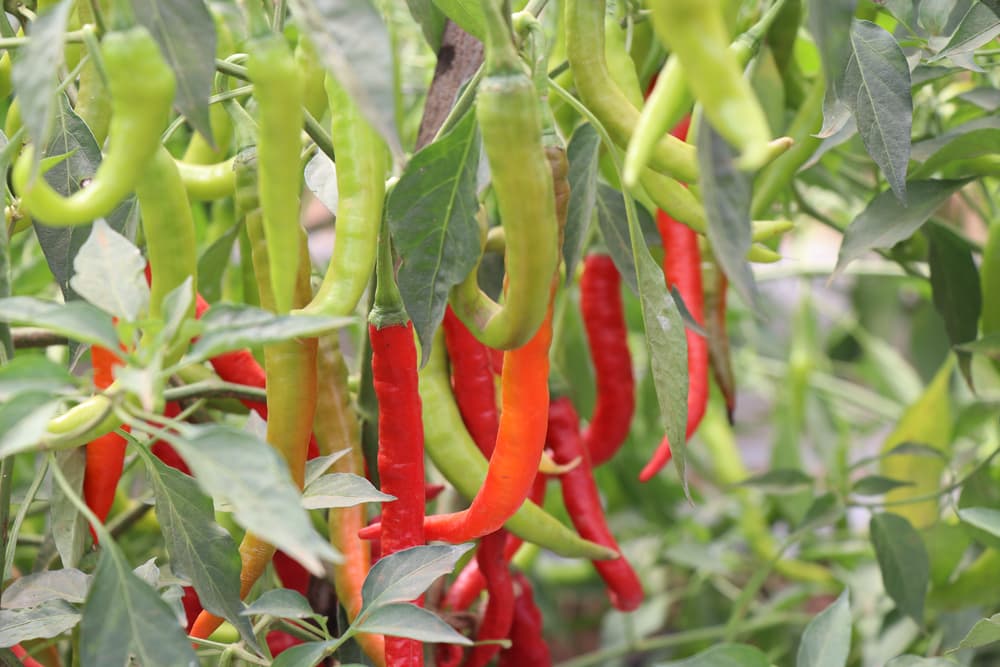
Each of them contains numerous varieties and a great number of hybrids as well.
A sizeable majority of the varieties that are used all over the world belong to C. annuum and C. chinense.
The first includes most of the well-known ‘normal-hot’ varieties and the second most of the well-known ‘super-hot’ ones.
Spiciness
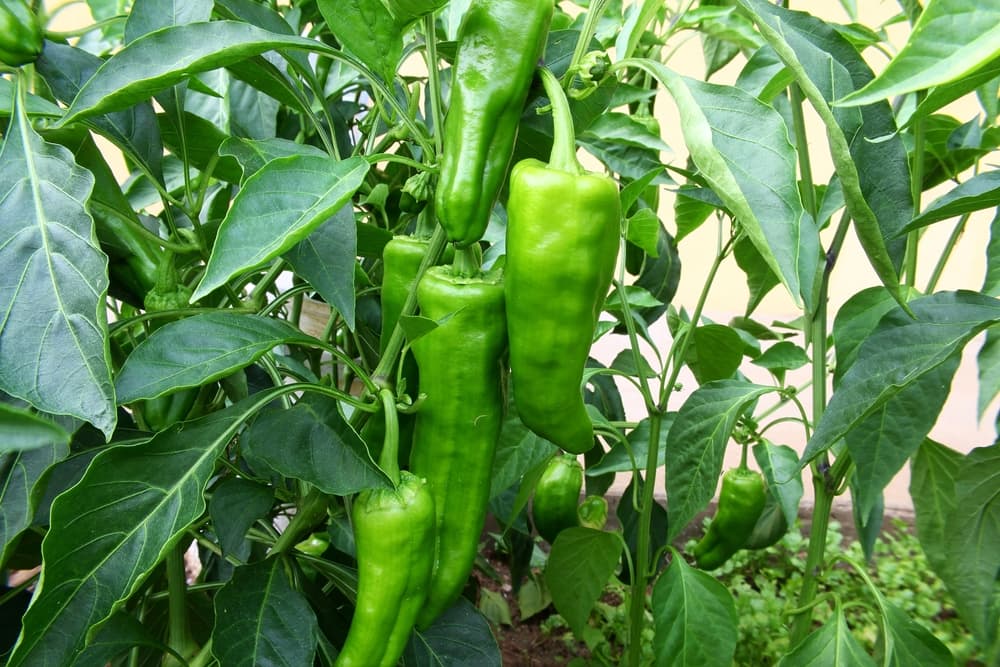
The heat or spiciness of a chilli comes from capsaicinoids which are a class of chemical compounds of which capsaicin is the most common.2The Science of a Chilli. (2019, March 2). The Oxford Scientist. Retrieved March 14, 2023, from https://oxsci.org/the-science-of-a-chilli/
Capsaicinoids are found in all chillies in concentrations from trace or negligible to off-the-scale.
On the point of spiciness, the heat or pungency of a particular variety of chilli is a quantifiable value, as many readers may know.
Scoville Heat Units
In 1912 – over a hundred years ago – Wilbur Scoville, an American pharmacist, devised a not-too-precise but ingenious method to measure the heat or spiciness of chillies.3The Scoville Scale. (n.d.). The University of Bristol. Retrieved March 14, 2023, from http://www.chm.bris.ac.uk/motm/chilli/scoville.htm
Very concisely, he had volunteer tasters try out diluted solutions of various chillies.
(The inverse of the) the dilution at which a particular chilli’s heat became undetectable was that chilli’s heat rating.

This number came to be called ‘Scoville Heat Unit,’ abbreviated as SHU.
Chillis (or peppers) that have no heat and are classified as ‘sweet peppers’ have 0 to 100 SHUs.
In the kitchen we use chillies as a spice (and bell peppers as a vegetable) and are free to see and treat them as such; however, all Capsicum species, be they whatever kind of chilli, are fruits from a botanical perspective.4Is a Pepper a Fruit or a Vegetable and Why? (n.d.). Eufic. Retrieved March 14, 2023, from https://www.eufic.org/en/healthy-living/article/is-a-pepper-a-fruit-or-a-vegetable-and-why
For the purposes of this article, chillies are not props for showing off in chilli-eating competitions but are a food ingredient.
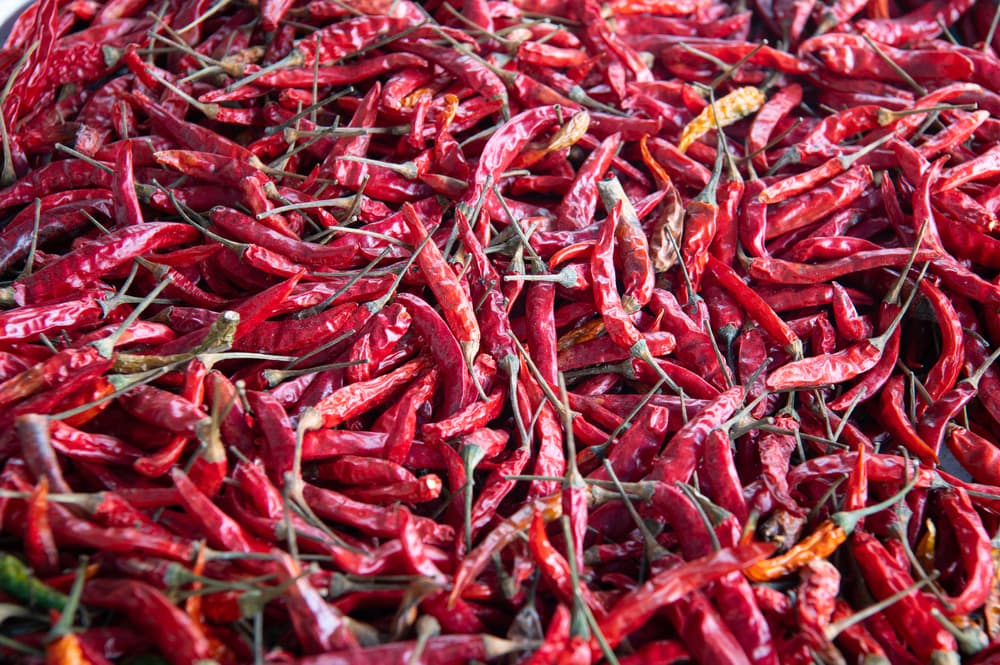
Therefore, we do not discuss the ‘Nuclear’ Chillies – let alone ‘Dragon’s Breath’ or ‘Carolina Reaper’. Nor do we list exotica like black chillies.
A very nice assortment of sensible choices selected for usability in the kitchen, enjoyability in dishes, and tingle-tastiness on the palate, is presented underneath.
We list these in order of increasing heat and spiciness since that is, after all, the primary attribute of chillies.
For informative purposes we mention the SHU value for each variety of chilli we list underneath.
1) ‘Anaheim’
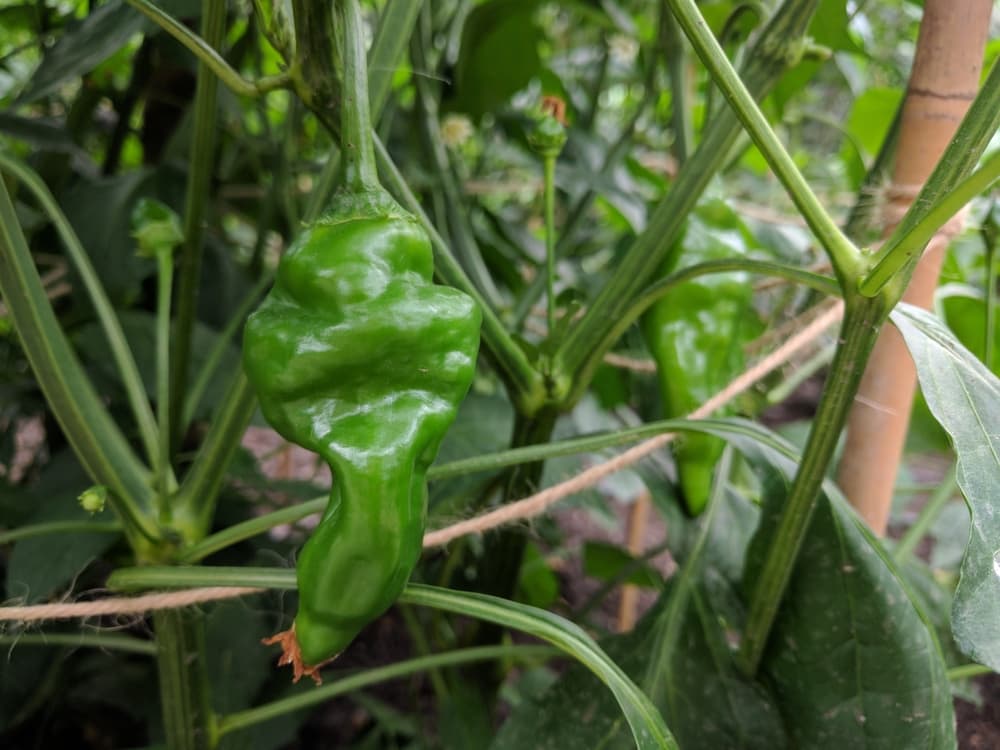
As this variety’s name suggests, it is very popular on America’s West Coast.
This dark green-to-red variety is the ‘go-to’ chilli for homemade dishes, being very mild and piquantly flavourful.
Perfect for all who clamour for spicy foods!
Only 500 to 2,500 SHUs.
2) ‘Ohnivec’
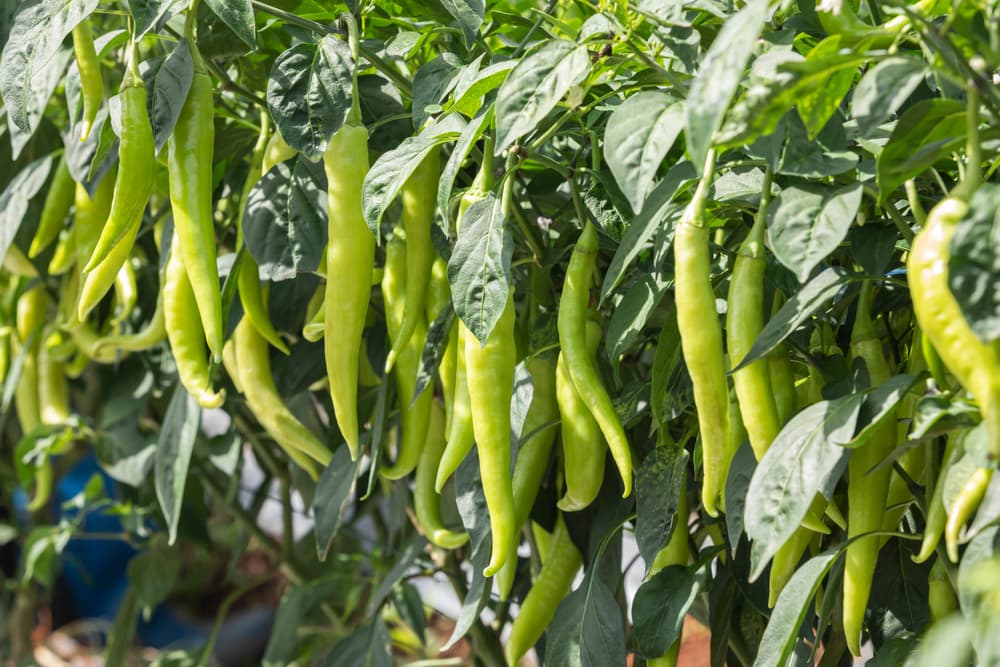
This little-known chilli is a fairly ‘adjustable’ variety; more so than most.
Pick it young and yellow and it is totally mild; pick it when it’s deep red, and it has a bit of a kick (but only a bit).
At 20-25cm these chillies are BIG. Moreover, these plants bear profuse fruit.
It is an easy-to-grow variety, is also easy on the palate, and has a ‘juicy’ taste.
1,000 to 2,500 SHUs but specimens may reach 3,500 SHUs.
3) ‘Hungarian Wax’
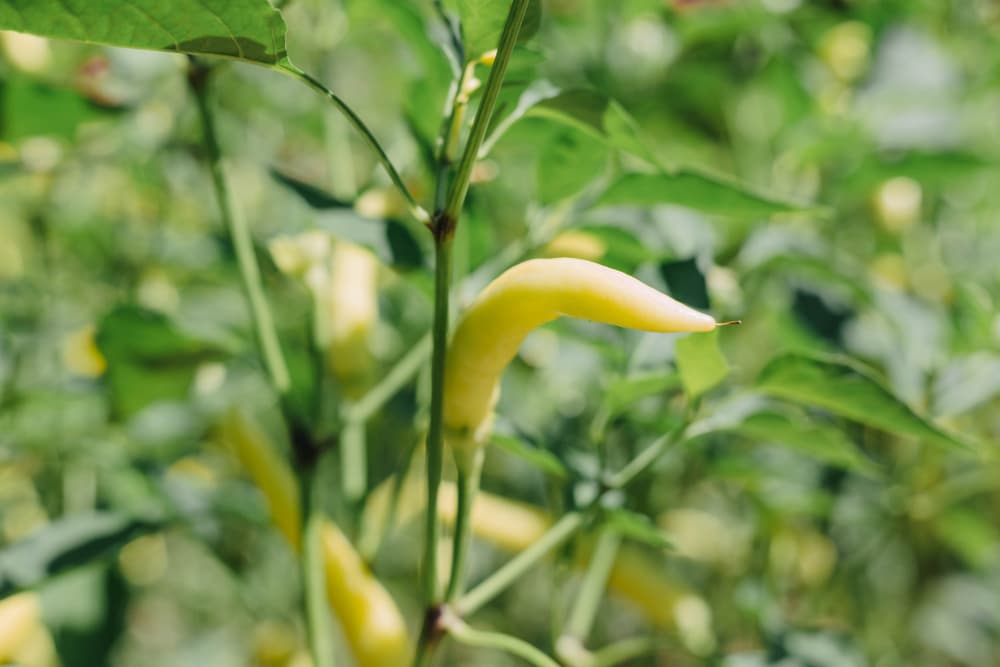
This mild variety is very easy to grow indoors.
It is not only well suited to the British climate, it is also well suited to the British palate!
This popular variety starts off yellowish-green and turns red on the plant.
It is one of those whose heat is very strongly dependent on its maturity on the vine, as Horticultural Colin Skelly shares:
“I can attest to the suitability of ‘Hungarian Wax’ for the British climate.
“This is my go-to cultivar for reliability and variability of heat; low when green and pretty hot when red.
“It does make for the odd surprise in heat, which can be exhilarating or excruciating depending on your preference!”
5,000 to 10,000 SHUs but specimens may range from a low of 1,000 to a high of 15,000.
This variety has also been given the RHS Award Of Garden Merit.
4) ‘Jalapeño’
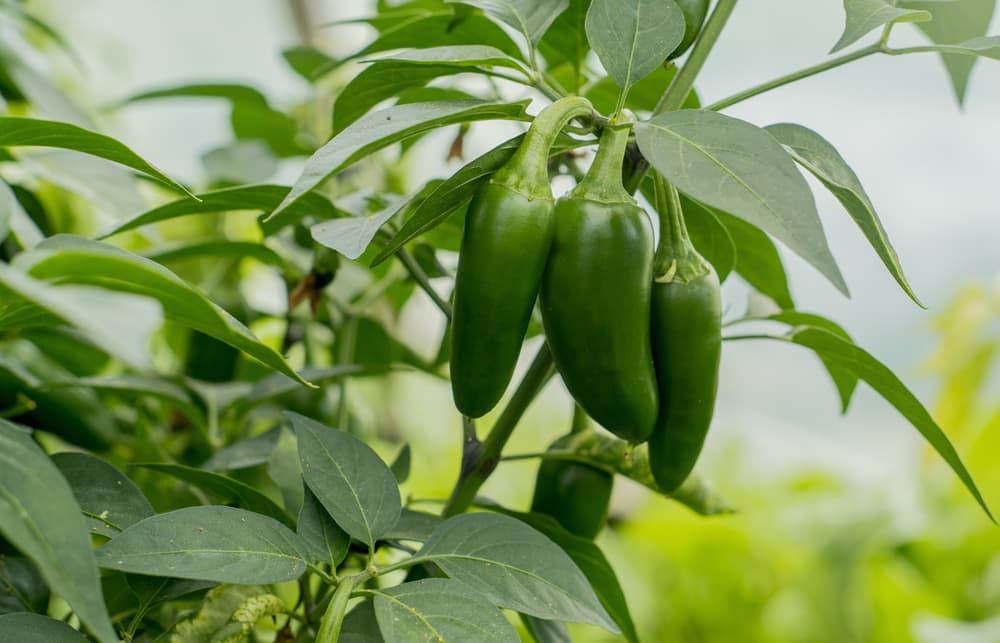
Though somehow this name usually conjures up images of intense heat, a Jalapeño is actually one of the milder varieties, ranking exactly nowhere on the H-Bomb scale.
This biggish and thickish green chilli is one of those flavourful ones, having – besides a pleasant dose of heat – citrusy-tangy taste.
In Texas, a pizza is not considered complete without Jalapeños.
2,500 to 8,000 SHUs.
5) ‘Serrano’

One might call this variety a smaller and hotter version of a Jalapeño.
Though this chilli starts off green and progresses to orange or red (or yellow), it is usually picked green.
Unlike a Jalapeño, the Serrano is not often used as a topping or diced in foodstuffs but is roasted or used to make salsas and sauces.
10,000 to 22,500 SHUs.
6) ‘Peperone Picante Calabrese’
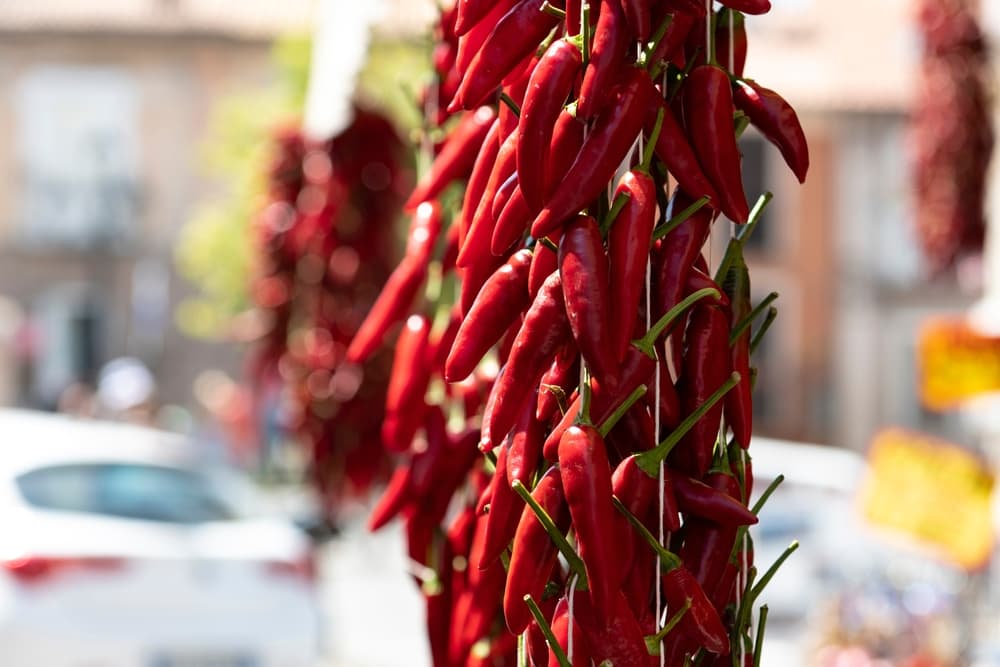
If a chilli can be called ‘flavourful,’ this one is at least a prime contender.
A deep, lovely red in colour and with that classic chilli shape, the Calabrian has a nice level of heat but has a wonderfully complex flavour, being tangy, fruity, and a little smoky.
This versatile chilli is as suitable for home-cooked foods as it is for high-end cuisine.
25,000 to 40,000 SHUs.
7) ‘Bolivian Rainbow’
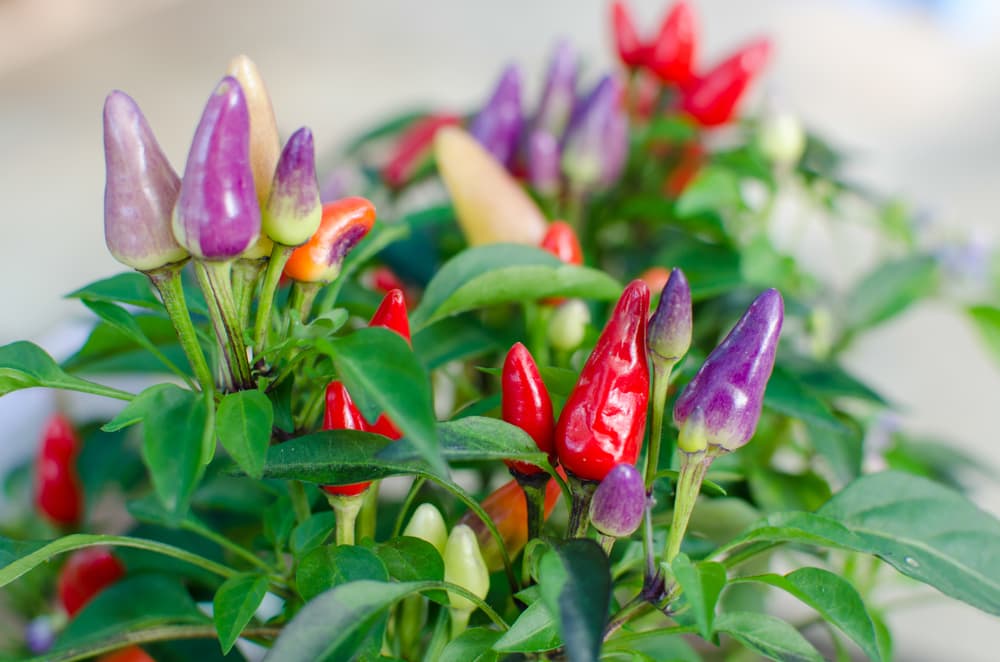
Though far from an ‘essential’ variety, you just have to mention this pretty baby – after all, it’s a two-in-one, being a highly ornamental plant but also a bona fide chilli.
At any given time during the fruiting season, this plant bears its small, inverted fruit in yellows, oranges, reds, and purples – this plant is Nature’s Pixie Lights!
At the same time they are that ‘just right’ hot and spicy, and are even easy to grow.
20,000 to 40,000 SHUs.
8) ‘Cayenne’
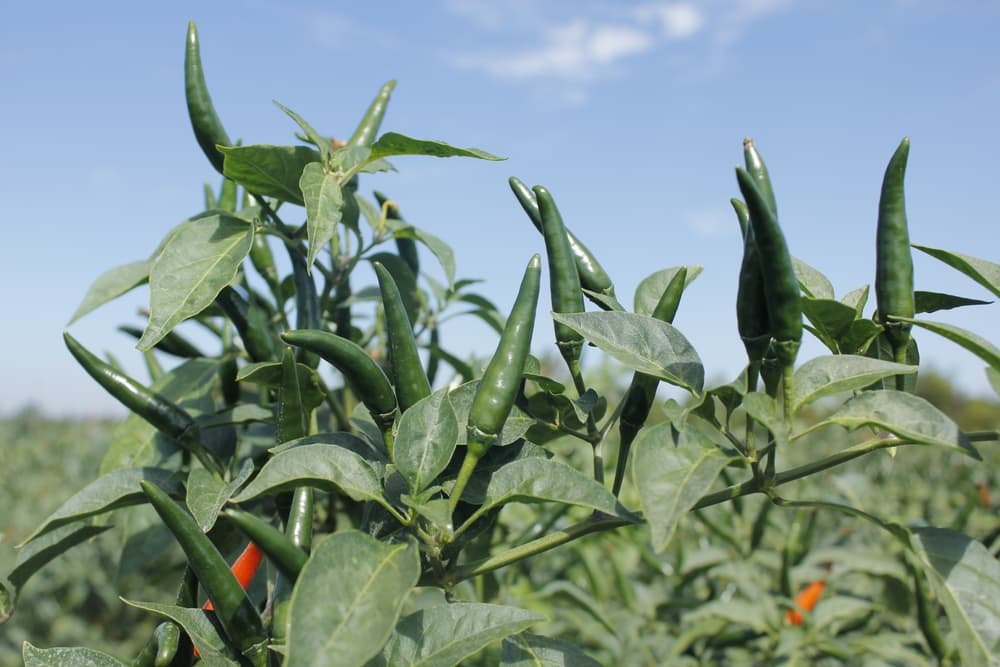
If it’s long, thin, and red, it’s a Cayenne Chilli.
Cayenne powder and flakes, so commonly found in Tex-Mex style restaurants, is the dried form of the Cayenne Chilli.
Also, many or most Spanish or Mexican-style hot sauces have Cayenne as an ingredient.
Tried diced or sliced, you will find an appreciable level of heat.
It has a very zesty and pungent, slightly smoky, taste.
30,000 to 50,000 SHUs.
9) ‘Bird’s Eye’
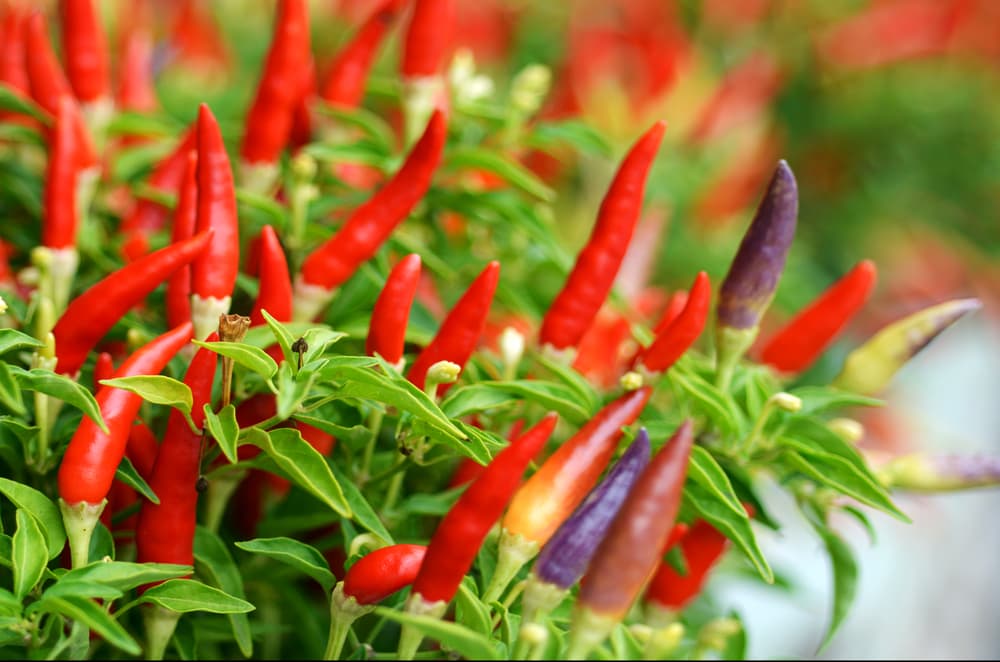
Identified with Thailand to the extent that it is even called ‘Thai Chilli,’ this narrow, pointed chilli packs near-bomb-level heat.
Unlike most other chillies, this one is borne upright (pointing upwards).
Used in most Far-Eastern cuisines, this is the chilli that gives Thai Cuisine its distinctive hot spiciness, a tingling, citrusy, and very tasty heat.
It is too hot to eat comfortably except finely chopped, and is wonderful to make sauces, curries, and pastes with.
50,000 to 100,000 SHUs.
10) ‘Habanero’
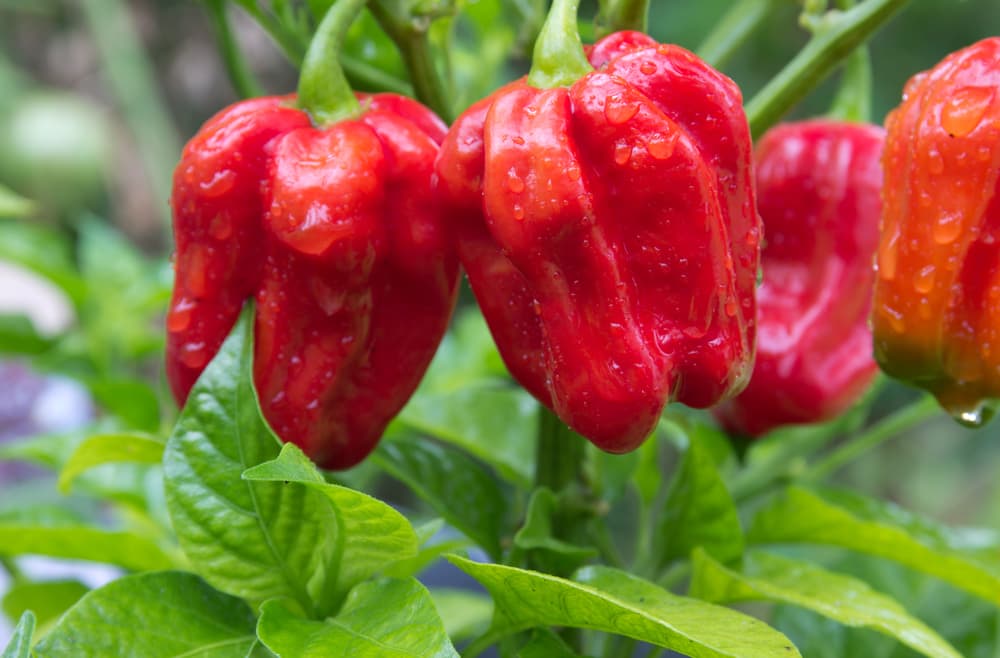
This is an extremely hot naturally-occuring chilli and this is where the chilli heat-bombs begin.
Not merely super-hot, the Habanero is tasty and citrusy.
Unlike our other varieties this one’s a type of Capsicum chinense.
Though it did not originate in Mexico, it is now claimed by the Mexicans as their own and is a widely-used spice in Mexican cuisine, sauces, and pastes.5Habanero. (n.d.). World Crops. Retrieved March 14, 2023, from https://worldcrops.org/crops/habanero
Habanero Chillies are easy to grow and the plants are productive but the fruit can hardly be chopped up, ground, or blended and added to homemade food given its intense heat!
SHU 100,000 to 350,000 SHUs but some cultivars go up to 600,000 SHUs.
Habanero has also been awarded the RHS AGM.
References
- 1Capsicum species. (n.d.). Oxford University Plants. Retrieved March 14, 2023, from https://herbaria.plants.ox.ac.uk/bol/plants400/Profiles/cd/Capsicum
- 2The Science of a Chilli. (2019, March 2). The Oxford Scientist. Retrieved March 14, 2023, from https://oxsci.org/the-science-of-a-chilli/
- 3The Scoville Scale. (n.d.). The University of Bristol. Retrieved March 14, 2023, from http://www.chm.bris.ac.uk/motm/chilli/scoville.htm
- 4Is a Pepper a Fruit or a Vegetable and Why? (n.d.). Eufic. Retrieved March 14, 2023, from https://www.eufic.org/en/healthy-living/article/is-a-pepper-a-fruit-or-a-vegetable-and-why
- 5Habanero. (n.d.). World Crops. Retrieved March 14, 2023, from https://worldcrops.org/crops/habanero

